~ October 10, 2024
Everyone loves watching the leaves change in autumn and observing the variety of colors that nature unveils from its mostly green summer canopy. Due to its symbolic essence, this seasonal transformation has inspired many artists to create amazing poetry, such as “Nothing Gold Can Stay” by Robert Frost or “Song for Autumn” by Mary Oliver. But have you ever wondered the scientific reason as to how trees get their unique fall colors?
In the spring and summer, deciduous tree leaves produce a chemical called chlorophyll, which is responsible for the green color. Chlorophyll is in charge of using the sunlight’s energy to create sugars that the tree needs to survive. There are actually two main types of chlorophyll, Chlorophyll A and Chlorophyll B. Chlorophyll A is present in every tree, but not every tree has chlorophyll B. Chlorophyll B is present in trees that do not get as much sunlight, so chlorophyll B assists Chlorophyll A to be able to produce enough food for the trees to survive. Chlorophyll A gives leaves a bright green shade, where chlorophyll B produces a darker green color.
As the seasons begin to change, daylight becomes shorter and temperatures decrease, causing the trees to stop producing the sugars that it needs to live. As a result, the chlorophyll and its green pigment begins to disappear, revealing the brilliant fall colors that so many trees are adored for. Aside from chlorophyll, there are two other chemicals that bring pigments to tree leaves; carotenoids and anthocyanins.
Carotenoids, responsible for giving leaves a yellow-orange pigment, are actually in the tree leaves all summer, but the chlorophyll pigment covers it. Carotenoids work behind the scenes of chlorophyll to help absorb energy that chlorophyll does not capture and give that energy to chlorophyll. It also protects the chlorophyll from solar damage.
Anthocyanins, unlike carotenoids, are not always present in the tree leaves, and some leaves do not produce anthocyanins at all. This chemical gives leaves a red color, and is a product of excessive sugar concentration in the leaves, left by the chlorophyll, combined with sunlight exposure. Anthocyanins are also present in fruits like apples or berries that have a red shade.
Autumn is a magical season that has the ability to fascinate us each and every year with its brilliant transformation of hues in trees. Sometimes it can seem so supernatural in all of its glory that we forget to consider the scientific process that is truly at work. Walking through the rows of trees in the nursery this time of year is inspiring – nature’s artistry and science on full display!
~ Cora Wilkinson
SGN Trees with Bright Fall Color!
https://springgrovenursery.com/product-category/attributes/bright-fall-color/
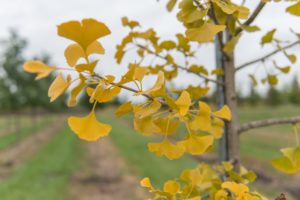
Nothing Gold Can Stay
Nature’s first green is gold,
Her hardest hue to hold.
Her early leaf’s a flower;
But only so an hour.
Then leaf subsides to leaf.
So Eden sank to grief,
So dawn goes down to day.
Nothing gold can stay.
~ Robert Frost
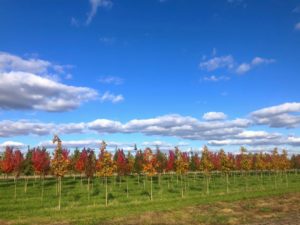
Song for Autumn
In the deep fall
don’t you imagine the leaves think how
comfortable it will be to touch
the earth instead of the
nothingness of air and the endless
freshets of wind? And don’t you think
the trees themselves, especially those with mossy,
warm caves, begin to think
of the birds that will come — six, a dozen — to sleep
inside their bodies? And don’t you hear
the goldenrod whispering goodbye,
the everlasting being crowned with the first
tuffets of snow? The pond
vanishes, and the white field over which
the fox runs so quickly brings out
its blue shadows. And the wind pumps its
bellows. And at evening especially,
the piled firewood shifts a little,
longing to be on its way.
~ Mary Oliver
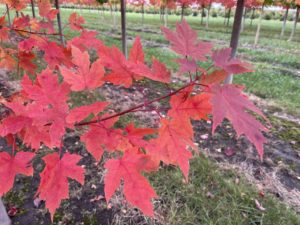
Autumn Blaze Maple
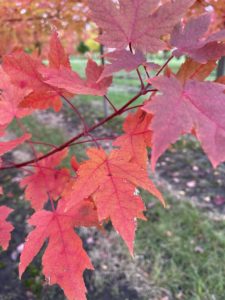
Autumn Blaze Maple
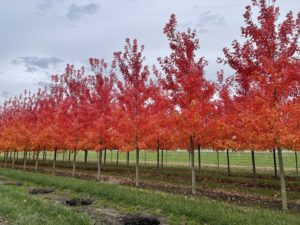
Autumn Blaze Maple
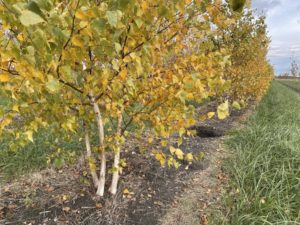
Whitespire Birch
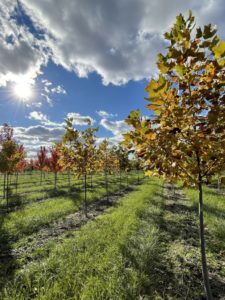
Tulip Tree
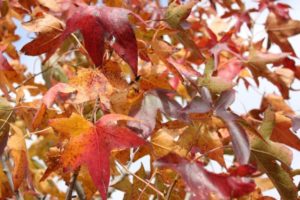
Sweetgum in the Fall
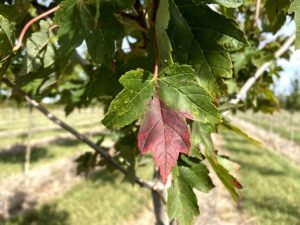
Sun Valley Red Maple
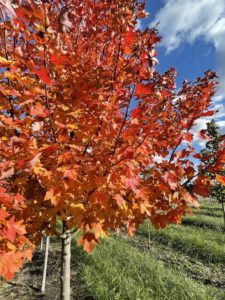
Redpointe Red Maple
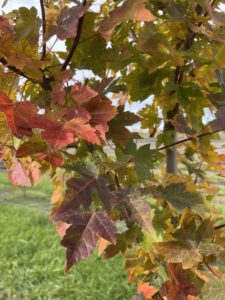
Redpointe Maple
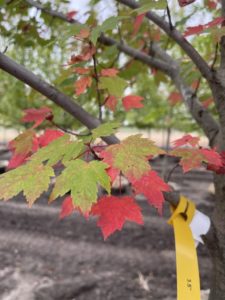
Red Sunset Red Maple
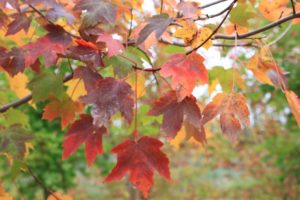
Pacific Sunset Maple
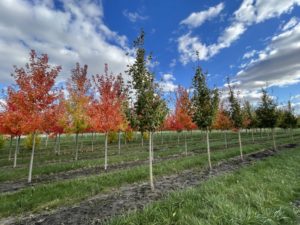
Maples in the Fall
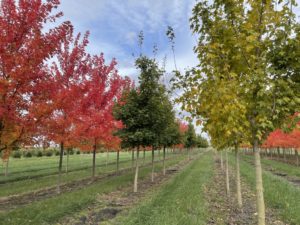
Maples in the Fall
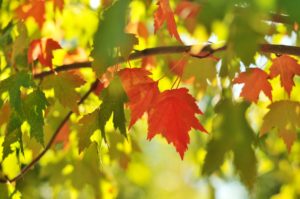
Fall Colors
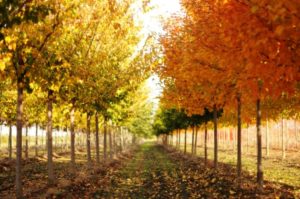
Maples in the Fall
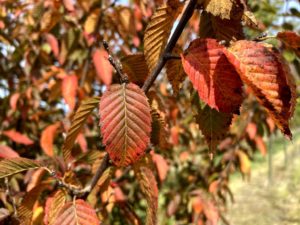
Carpinus caroliniana
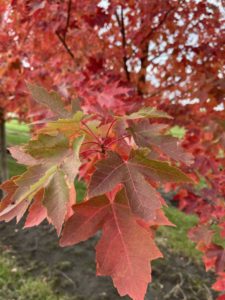
Autumn Fantasy Maple
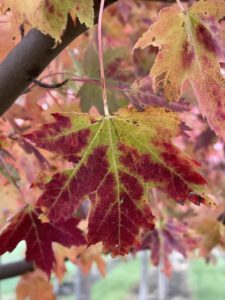
Autumn Fantasy Maple
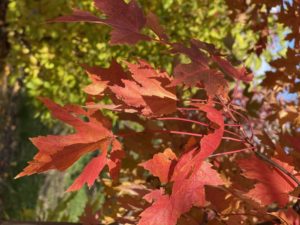
Autumn Blaze Maple
Sources:
http://www.scifun.org/chemweek/autumncolors2017.pdf
https://sciencing.com/chloroplasts-use-make-glucose-16779.html
https://www.esf.edu/pubprog/brochure/leaves/leaves.htm
https://www.americanforests.org/blog/science-behind-fall-foliage/
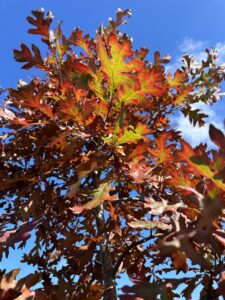
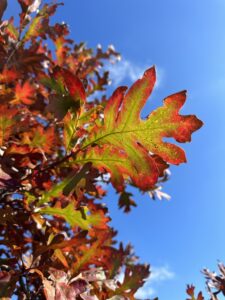
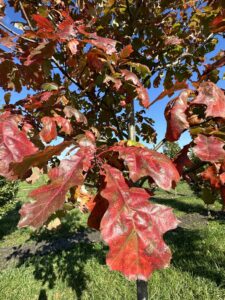
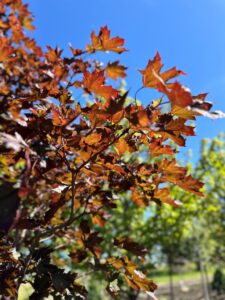
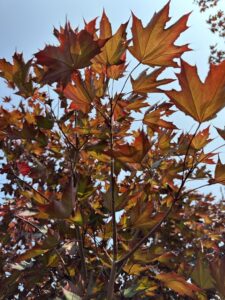




Leave a Reply